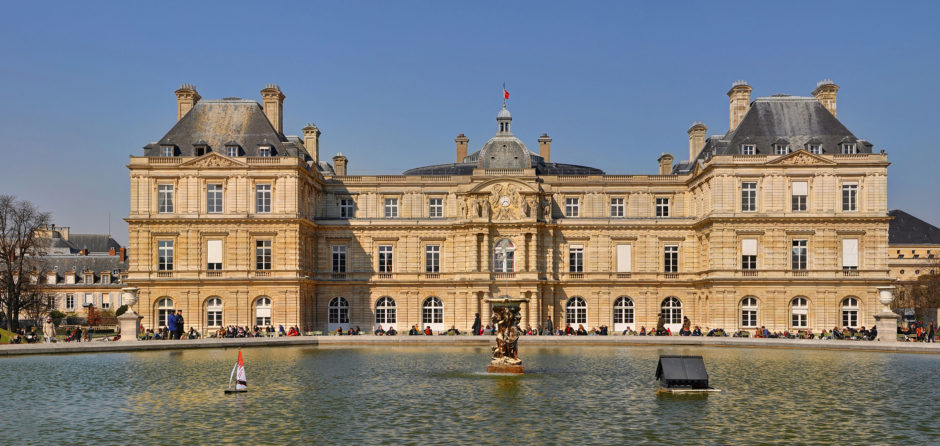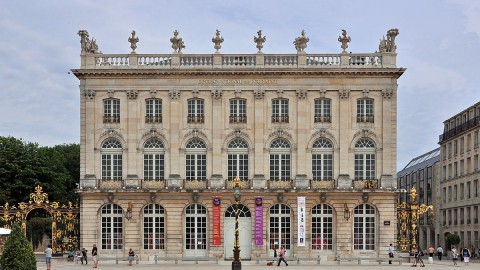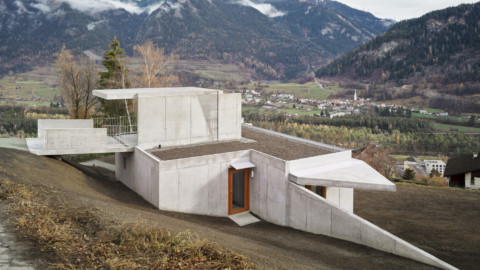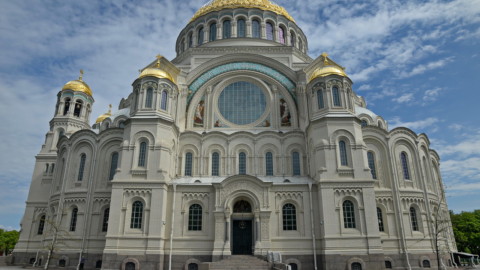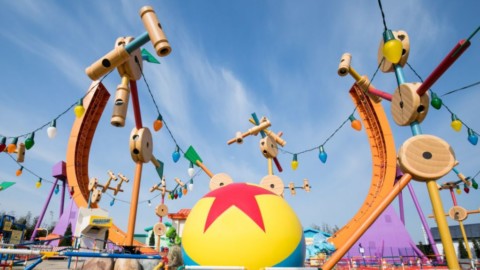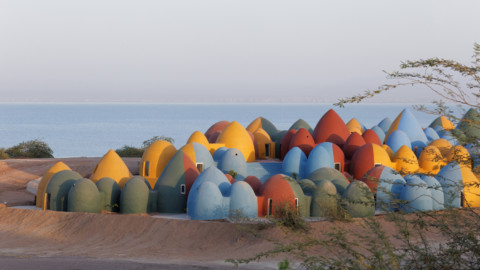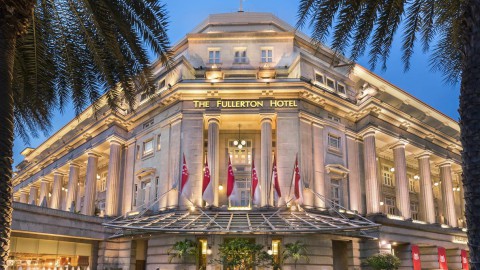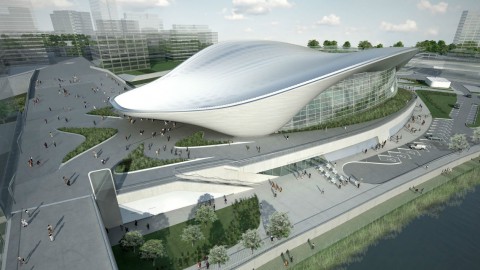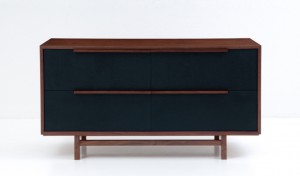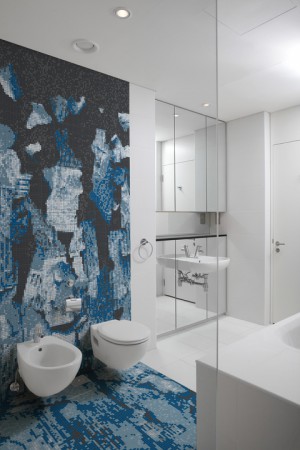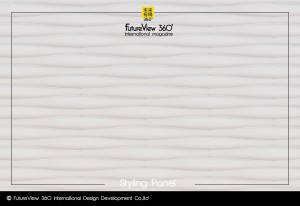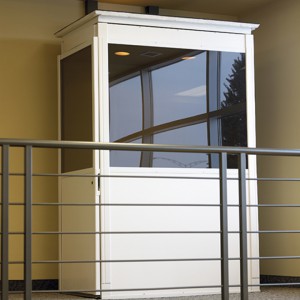LUXEMBOURG PALACE 盧森堡宮
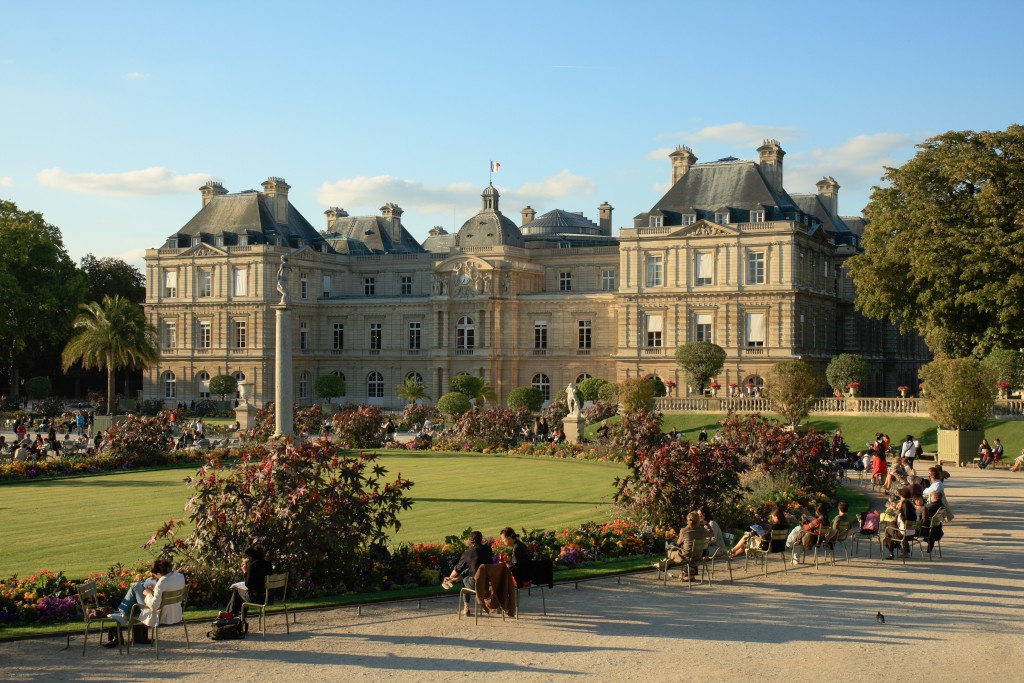
Location Paris, France
Address 15 rue de Vaugirard
Coordinates 48 ° 50’54 “N 2 ° 20’14” E
Current tenants French Senate
Construction started 1615
Completed 1645
Design and construction
Architect Salomon de Brosse
Other designers
Jean Chalgrin
Alphonse de Gisors
地點法國巴黎
地址15 rue de Vaugirard
坐標48°50’54“N 2°20’14”E
目前的租戶法國參議院
施工始於1615年
完成1645
設計和建造
建築師Salomon de Brosse
其他設計師
Jean Chalgrin
阿方斯·吉索爾
The Luxembourg Palace (French: Palais du Luxembourg, pronounced [pa.lɛ dy lyk.sɑ̃.buːʁ]) is located at 15 rue de Vaugirard in the 6th arrondissement of Paris. It was originally built (1615–1645) to the designs of the French architect Salomon de Brosse to be the royal residence of the regent Marie de’ Medici, mother of Louis XIII of France. After the Revolution it was refashioned (1799–1805) by Jean Chalgrin into a legislative building and subsequently greatly enlarged and remodeled (1835–1856) by Alphonse de Gisors. Since 1958 it has been the seat of the French Senate of the Fifth Republic.
Immediately west of the palace on the rue de Vaugirard is the Petit Luxembourg, now the residence of the Senate President; and slightly further west, the Musée du Luxembourg, in the former orangery. On the south side of the palace, the formal Luxembourg Garden presents a 25-hectare green parterre of gravel and lawn populated with statues and large basins of water where children sail model boats.
盧森堡宮殿(法語:盧森堡宮殿,發音為pa.lɛdylyk.sɑ.buːʁ)位於巴黎第六區的Vaugirard大街15號。它最初建造(1615年至1645年),法國建築師Salomon de Brosse的設計是法國路易十三的母親攝政王瑪麗·德·美第奇的皇家住宅。革命之後,讓·查勒格林(Jean Chalgrin)將其改建(1799-1805)進入立法大樓,隨後由阿方斯·吉索爾(Alphonse de Gisor)進行了大規模的改建(1835-1856)。自1958年以來,它一直是第五共和國法國參議院的所在地。
緊靠瓦吉拉爾街的宮殿西邊是小盧森堡,現在是參議長的住所;稍微向西,在前橘園盧森堡博物館。在宮殿的南面,正式的盧森堡花園提供了一個25公頃的綠色石礫和草坪,裡面擺滿了雕像和大型的水盆,孩子們在那裡航行模型船。
Early history
After the death of Henry IV in 1610, his widow, Marie de Médicis, became regent to her son, Louis XIII. Having acceded to a much more powerful position, she decided to erect a new palace for herself, adjacent to an old hôtel particulier owned by François de Luxembourg, Duc de Piney, which is now called the Petit Luxembourg and is the residence of the president of the French Senate.
The Luxembourg Palace was modeled after Palazzo Pitti in Florence at the request of Marie de Médicis.
Marie de Médicis desired to make a building similar to her native Florence’s Palazzo Pitti, and to this effect had the architect Métezeau (either Louis Métezeau or his brother, Clément Métezeau) sent to Florence to make detailed drawings of the building.
Ceiling of the Salle du Livre d’Or
Marie de Médicis bought the Hôtel de Luxembourg and its fairly extensive domain in 1612 and commissioned the new building, which she referred to as her Palais Médicis, in 1615. Its construction and furnishing formed her major artistic project, though nothing remains today of the interiors as they were created for her, save some architectural fragments reassembled in the Salle du Livre d’Or. The suites of paintings she commissioned, in the subjects of which she expressed her requirements through her agents and advisers, are scattered among museums.
Floor plan (1752) shows the large enclosed cour d’honneur and the long Rubens gallery in the right wing
Marie de Médicis installed her household in 1625, while work on interiors continued. The apartments in the right wing on the western side were reserved for the Queen and the matching suite to the east, for her son, Louis XIII, when he was visiting (floor plan).
The gallery in the east wing had been intended for the display of paintings celebrating Henri IV, and buildings housing stables and services were planned to either side of the pavilions flanking the entrance on the street, but these projects remained unfinished in 1631, when the Queen Mother was forced from court,[8] following the “Day of the Dupes” in November. Louis XIII commissioned further decorations for the Palace from Nicolas Poussin and Philippe de Champaigne.
View of the Palais d’Orléans, c. 1643, with the garden parterre designed by Jacques Boyceau visible behind
In 1642, Marie bequeathed the Luxembourg to her second and favourite son, Gaston, duc d’Orléans, who called it the Palais d’Orléans, but by popular will it was still known by its original name.
Upon Gaston’s death, the palace passed to his widow, Marguerite de Lorraine, then to his elder daughter by his first marriage, Anne, duchesse de Montpensier, La Grande Mademoiselle. In 1660, Anne de Montpensier sold the Luxembourg to her younger half-sister, Élisabeth Marguerite d’Orléans, duchesse de Guise who, in turn, gave it to her cousin, King Louis XIV, in 1694.
In 1715, the palace became the residence of Marie Louise Elisabeth d’Orleans, Duchess of Berry (1695-1719). The widowed Duchess was notoriously promiscuous, having the reputation of a French Messalina, relentlessly driven by her unquenchable thirst for all pleasures of the flesh. The Luxembourg palace and its gardens thus became stages where the princess acted out her ambitions, enthroned like a queen surrounded by her court. In some of her more exclusive parties, Madame de Berry also played the leading part in elaborate “tableaux-vivants” that represented mythological scenes and in which she displayed her person impersonating Venus or Diana. According to various satirical songs which scurrilously evoked her amours “the Lady of the Luxembourg” hid several pregnancies, shutting herself up from society when about to give birth. Her taste for strong liquors and her sheer gluttony also scandalized the court. On 21 May 1717, Madame de Berry received Peter the Great at the Luxembourg. She welcomed the visiting Tsar splendidly dressed in a magnificent sack-back gown which showcased her voluptuous bosom as well as her mischievous face but also helped conceal her growing corpulence for she was then in an “interesting condition”.
On 28 February 1718, the Duchess of Berry threw a magnificent party for her visiting aunt, the Duchess of Lorraine. The entire palace and its gardens were elaborately illuminated. The lavish banquet was followed by a masked ball. Madame de Berry made a dazzling appearance before her guests. She was then in the full splendour of her youthful beauty and pride and acted as if she were the very incarnation of the goddess of love, mirth, beauty and sensual pleasures. On 2 April 1719, after a grueling four-day labour, shut up in a small room of her palace, the young widow was delivere
早期歷史
1610年亨利四世去世後,他的遺,瑪麗·德梅迪西(Marie deMédicis)成為她的兒子路易十三的攝政王。在加入更強大的地位之後,她決定為她自己建造一座新的宮殿,毗鄰一個由Françoisde Luxembourg,Pine de Piney所擁有的舊酒店,現在被稱為小盧森堡,是總統的住所。法國參議院。
盧森堡宮仿照瑪麗·德·梅迪西斯(Marie deMédicis)的要求,仿照佛羅倫薩的皮蒂宮(Palazzo Pitti)。
瑪麗·德梅迪斯(Marie deMédicis)希望建造一座類似於她的佛羅倫薩的皮蒂宮的建築。為此,建築師梅特澤(路易斯·梅特佐或者他的兄弟克萊門特·梅泰澤(ClémentMétezeau))派人去佛羅倫薩詳細地畫圖。
Salle du Livre d’Or的天花板
Marie deMédicis於1612年買下盧森堡酒店及其相當廣泛的領域,並於1615年委託她稱之為她的PalaisMédicis的新大樓。它的建築和裝飾形成了她的主要藝術項目,儘管今天的內飾仍然沒有因為它們是為她創作的,所以在Salle du Livre d’Or重新裝配一些建築碎片。她委託的繪畫套件,通過她的代理人和顧問表達了她的要求,分散在博物館中。
平面圖(1752年)顯示了大型封閉的紅磨坊和在右翼的長長的魯本斯畫廊
瑪麗·德梅迪斯(Marie deMédicis)在1625年安裝了她的家,而室內的工作仍在繼續。西側右翼的公寓為她的兒子路易十三在訪問時(平面圖)預留給女王和東部的配套套房。
東翼的畫廊是為了展示亨利四世的繪畫作品而建的,房屋馬厩和服務的建築計劃在街道入口兩側的亭子兩側,但這些工程在1631年還沒有完成,當時的女王11月份,“母親節”之後,母親被迫離開法庭[8]。路易十三委託尼古拉斯·普桑和菲利普·德·尚帕涅進一步裝飾宮殿。
Palais d’Orléans的看法,c。 1643年,由雅克·博托設計的花園花壇後面可見
1642年,瑪麗把盧森堡遺留給了她的第二個也是最喜歡的兒子加斯頓·奧爾良(d’Orléans),他把這叫做奧爾良宮(Palais d’Orléans),但是由於流行的意願,它仍然以其原名命名。
加斯東死後,宮殿通過他的遺,瑪格麗特·洛林,然後通過他的第一次婚姻,安妮,duchesse de Montpensier,La Grande小姐,傳給他的大女兒。 1660年,安妮·德蒙龐西把盧森堡賣給了她年輕的半姐妹伊麗莎白·瑪格麗特·德·奧爾良(Islisabeth Marguerite d’Orléans),杜塞斯·德·蓋斯(Duchesse de Guise),她於1694年把它交給了她的堂兄路易十四國王。
1715年,宮殿成為瑪麗·路易絲·伊麗莎白·奧爾良,貝里公爵夫人(1695-1719)的住所。寡婦公爵夫人臭名昭著,擁有法國梅薩麗娜的名聲,她無情地渴望所有肉體的快樂。盧森堡的宮殿及其花園因此成為公主表現雄心壯志的舞台,像一個被她的宮廷包圍的王后。在她的一些更獨家的派對中,貝里夫人也扮演了代表神話場景的精心製作的“妓女動態”的主角,並展示了她扮演金星或黛安娜的人。根據各種諷刺性的歌曲,“盧森堡的夫人”掩蓋了幾次懷孕,在即將分娩時將自己從社會上關起來。她對強烈烈酒的嗜好以及她的暴食也使法庭感到慚愧。 1717年5月21日,貝里夫人在盧森堡接待了彼得大帝。她歡迎來訪的沙皇,身穿華麗的麻袋,展現了她豐滿的胸部以及她頑皮的面容,也掩飾了她日益增長的肥胖,因此她處於“有趣的狀態”。
1718年2月28日,貝里公爵夫人為她的訪問姨媽洛林公爵夫人舉行了一場盛大的派對。整個宮殿和花園都精心照亮。豪華的宴會之後是一個蒙面的球。貝里夫人在她的客人面前炫耀了一下。當時,她的青春美麗和驕傲的輝煌,充當了愛情,歡樂,美麗和感官快樂的女神的化身。 1719年4月2日,經過艱苦的四天勞動,她閉上了宮殿的一個小房間,年輕的寡婦被救出

Ceiling of the Salle du Livre d’Or
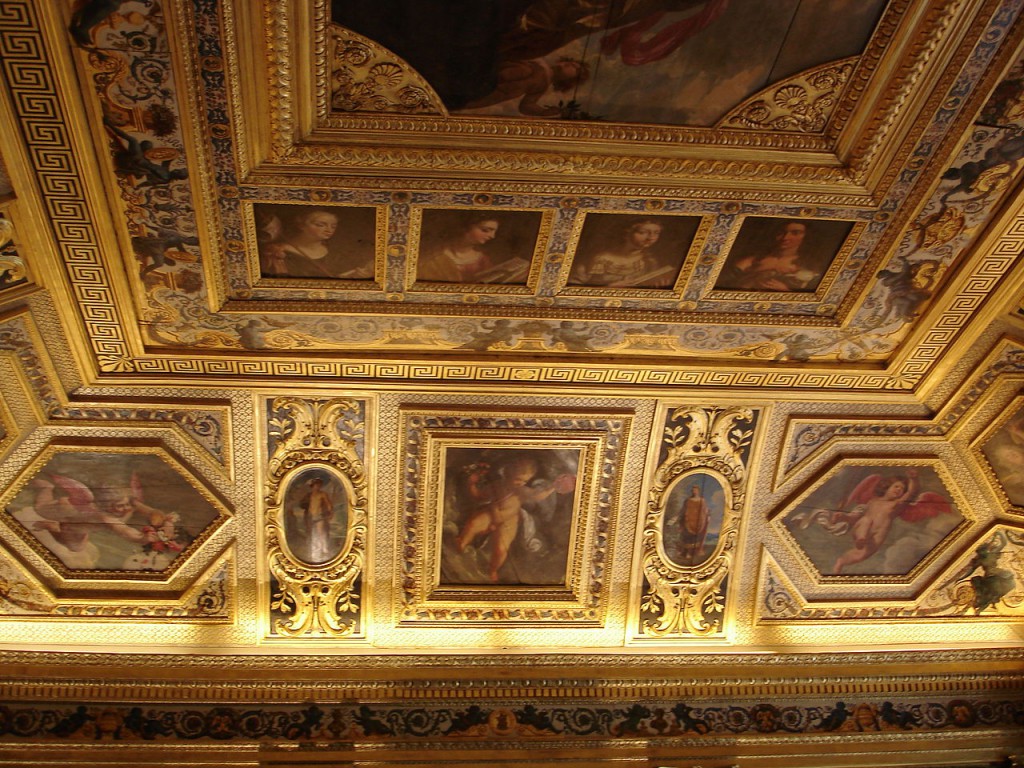
The Luxembourg Palace was modeled after Palazzo Pitti in Florenceat the request of Marie de Médicis.
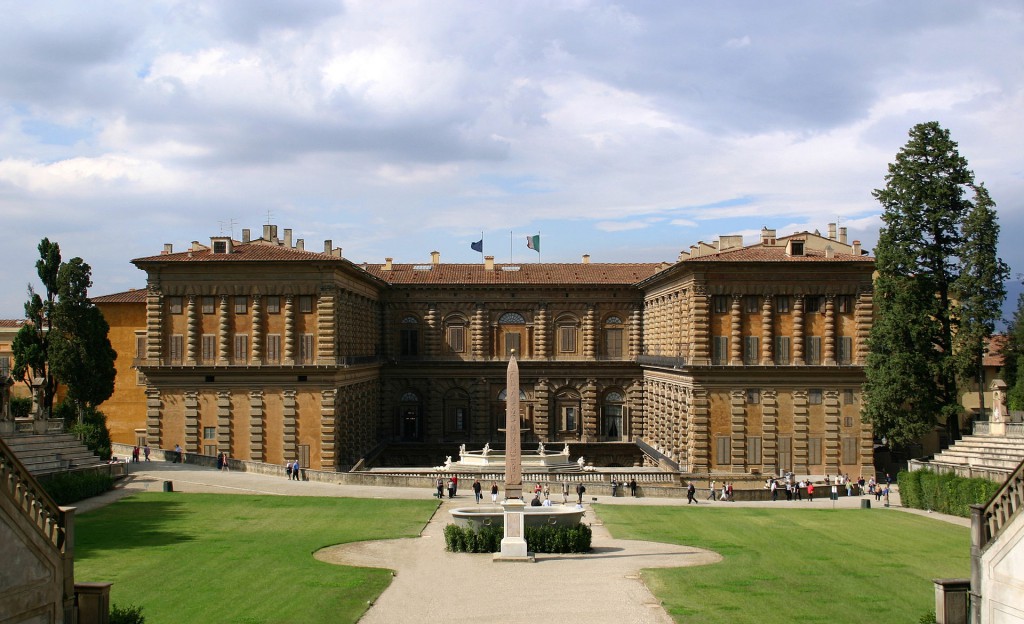
View of the Palais d’Orléans, c. 1643, with the garden parterre designed by Jacques Boyceau visible behind
Palace as parliament
From 1799 to 1805, the architect Jean Chalgrin transformed the palace into a legislative building. He demolished the grand central staircase (escalier d’honneur), replacing it with a senate chamber on the first floor, which incorporated and destroyed Marie de Médicis’ chapel on the garden side of the corps de logis. Chalgrin also enclosed the flanking terraces, making space for a library. At the same time he created a neo-classical escalier d’honneur in the west wing, a single monumental flight enclosed by an ionic colonnade and covered with a coffered barrel vault, the construction of which resulted in the destruction of the long gallery that had formerly housed the cycle of paintings by Rubens.
Plan showing Gisors’ garden wing and senate chamber (gray) and Chalgrin’s grand staircase (blue)
Library ceiling with Dante’s Inferno by Delacroix
Beginning in 1835, the architect Alphonse de Gisors added a new garden wing parallel to the old corps de logis, replicating the look of the original 17th-century facade so precisely that it is difficult to distinguish at first glance the old from the new. The new senate chamber was located in what would have been the courtyard area in-between.
Salle des Conférences
The new wing included a library (bibliothèque) with a cycle of paintings (1845–1847) by Eugène Delacroix. In the 1850s, at the request of Emperor Napoleon III, Gisors created the highly decorated Salle des Conférences (inspired by the Galerie d’Apollon of the Louvre), which influenced the nature of subsequent official interiors of the Second Empire, including those of the Palais Garnier.[8]
During the German occupation of Paris (1940–1944), Hermann Göring took over the palace as the headquarters of the Luftwaffe in France, taking for himself a sumptuous suite of rooms to accommodate his visits to the French capital.
His subordinate, Luftwaffe Field Marshal Hugo Sperrle, was also given an apartment in the Luxembourg palace, and spent most of the war enjoying the luxurious surroundings. “The Field Marshal’s craving for luxury and public display ran a close second to that of his superior, Goering; he was also his match in corpulence”, wrote armaments minister Albert Speer after a visit to Sperrle in Paris.[citation needed]
The palace was a designated “strong point” for German forces defending the city in August 1944, but thanks to the decision of Commanding General Dietrich von Choltitz to surrender the city rather than fight, the palace was only minimally damaged.
From 29 July to 15 October 1946, the Luxembourg Palace was the site of the talks of Paris Peace Conference.
作為議會的宮殿
從1799年到1805年,建築師Jean Chalgrin將這座宮殿變成了一座立法建築。他拆除了大中央樓梯(escalier d’honneur),取而代之的是在一樓的參議院,這個會議廳在德國石油公園的花園一側整合和摧毀了瑪麗·德梅迪西的教堂。 Chalgrin也包圍了側面梯田,為圖書館騰出空間。與此同時,他在西翼創造了一個新古典電子琴,一個由離子柱廊圍成的巨大的飛行器,上面覆蓋著一個方格的桶形拱頂,其結構造成長廊的破壞以前安置魯本斯繪畫的循環。
計劃展示Gisors的花園翼和參議院(灰色)和Chalgrin的宏偉樓梯(藍色)
圖書館天花板與德拉克洛瓦但丁的地獄
從1835年開始,建築師阿爾方斯·德·吉索爾斯(Alphonse de Gisors)增加了一個新的花園翼,平行於舊的德洛伊斯軍團,精確地複制了原來的17世紀的外觀,難以乍一看地區分舊的和新的。新的參議院位於之間的庭院區。
Salle desConférences
新翼包括一個圖書館(bibliothèque),由EugèneDelacroix畫一個週期(1845年至1847年)。在十九世紀五十年代,應拿破崙三世的要求,吉索爾創造了高度裝飾的會議廳(靈感來自盧浮宮的阿波羅畫廊),這影響了第二帝國後來的官方內部的性質,包括那些Palais Garnier。[8]
在德國占領巴黎(1940-1944)期間,赫爾曼·戈林(HermannGöring)接管了作為法國空軍總部的宮殿,為他自己提供了一套豪華套房,以容納他訪問法國首都。
他的下屬空軍元帥雨果·斯佩爾也在盧森堡的宮殿里居住過,大部分戰爭都是在豪華的環境中度過的。武裝部長艾伯特·施佩爾(Albert Speer)在巴黎訪問斯佩爾(Sperrle)後寫道:“元帥對奢侈品和公開展示的渴望與他的上級戈林的渴望緊密相連,他也是他的狂熱對手。
1944年8月,這座宮殿被指定為衛戍德國的德國軍隊的一個“強項”,但是由於迪特里希·馮·奇爾蒂茨將軍決定投降城市而不是打仗,宮殿只受到了輕微的破壞。
從1946年7月29日至10月15日,盧森堡宮是巴黎和會的會談地點。

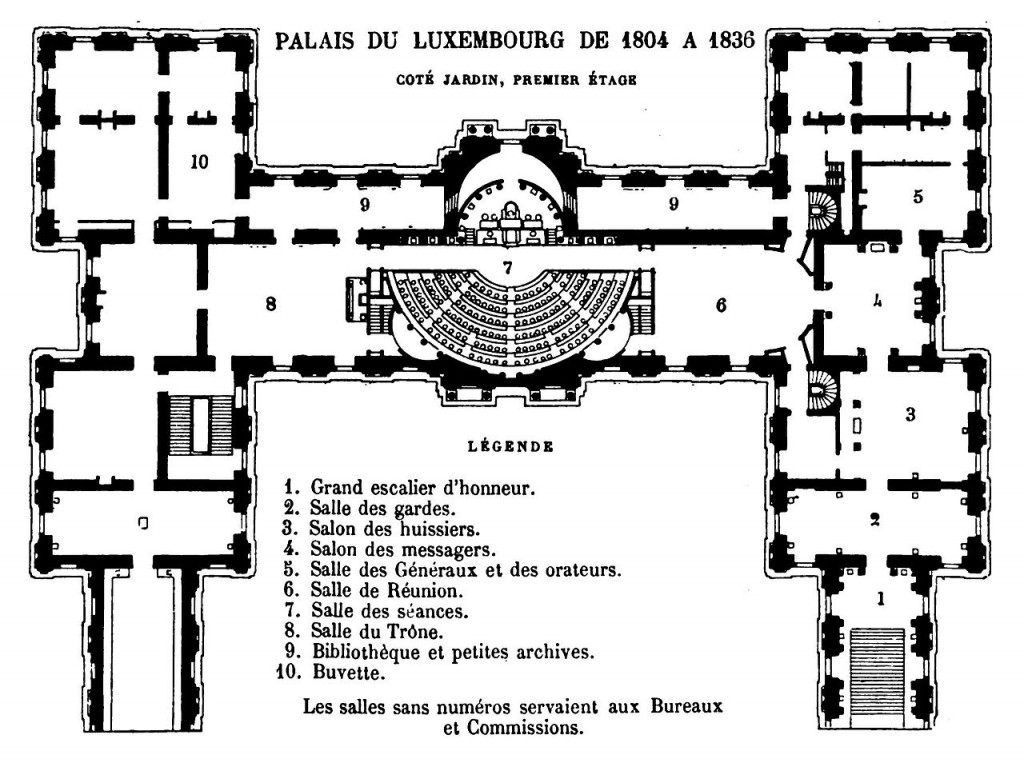
Plan showing Gisors’ garden wing and senate chamber (gray) and Chalgrin’s grand staircase (blue) 計劃展示Gisors的花園翼和參議院(灰色)和Chalgrin的宏偉樓梯(藍色)
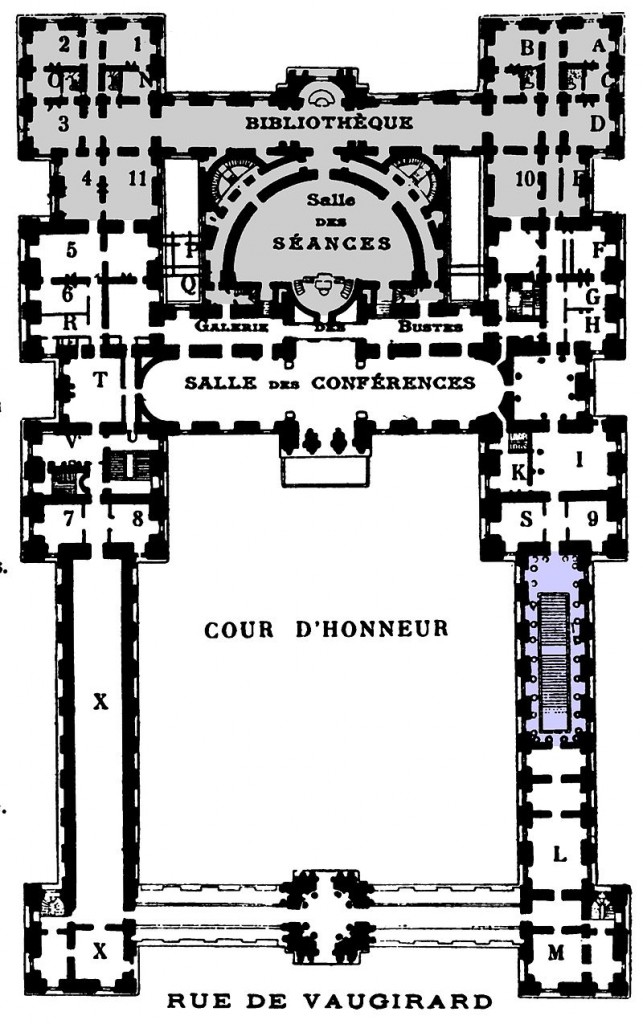
Chalgrin’s grand escalier
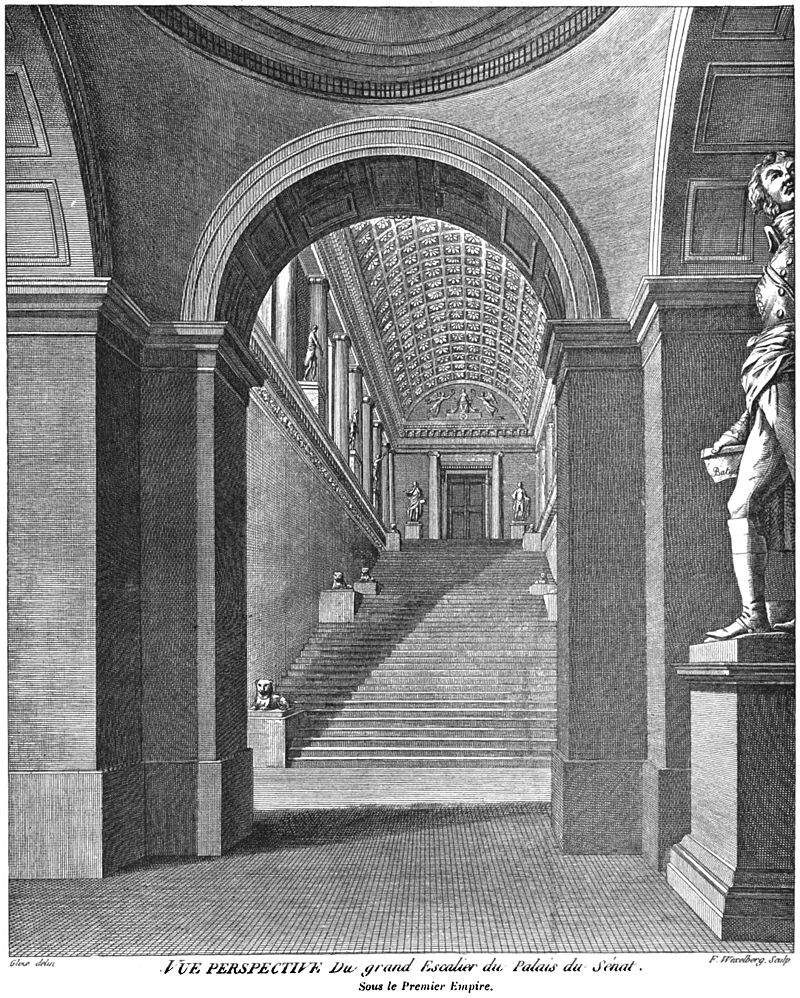
The Seven Statues facing the Senate Chamber’s Semicircle (from left to right):

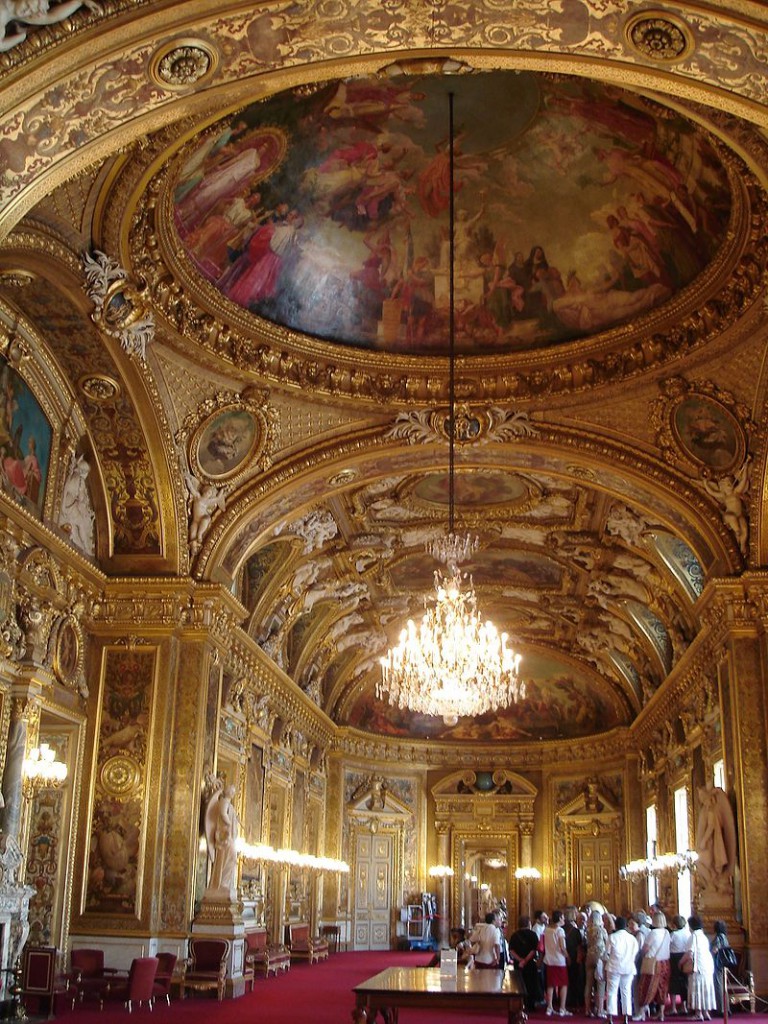
FROM: https://en.wikipedia.org/wiki/Luxembourg_Palace
LE PALAIS DU LUXEMBOURG VU DU CIEL
ARCHITECTURE DU PALAIS DU LUXEMBOURG
From: Sénat.
Don’t you think it’s addictive?
Want to know more about the beauty of architecture?
Come and join our members to explore the beauty of architectural design.
覺得看得不過癮嗎?
想要知道更多建築之美嗎?
快來加入我們的會員,一同探索建築設計之美。
The above article is purely for appreciation and sharing purposes, as well as the construction of new technology and the public can be in-depth understanding of the information at the same time there are sources, will be able to query, no use of the document as a commercial transaction, if illegal, please inform the We will immediately remove the site, thank you for cooperation.
以上文章純粹作為欣賞及分享用途,以及將建築新型技術傳遞給與大眾能夠深入了解,同時資料還有來源,將可查詢,絕無使用該文件資料作為商業交易行為,如有違法請務必告知該網站我們將立即處理撤除,謝謝合作。

